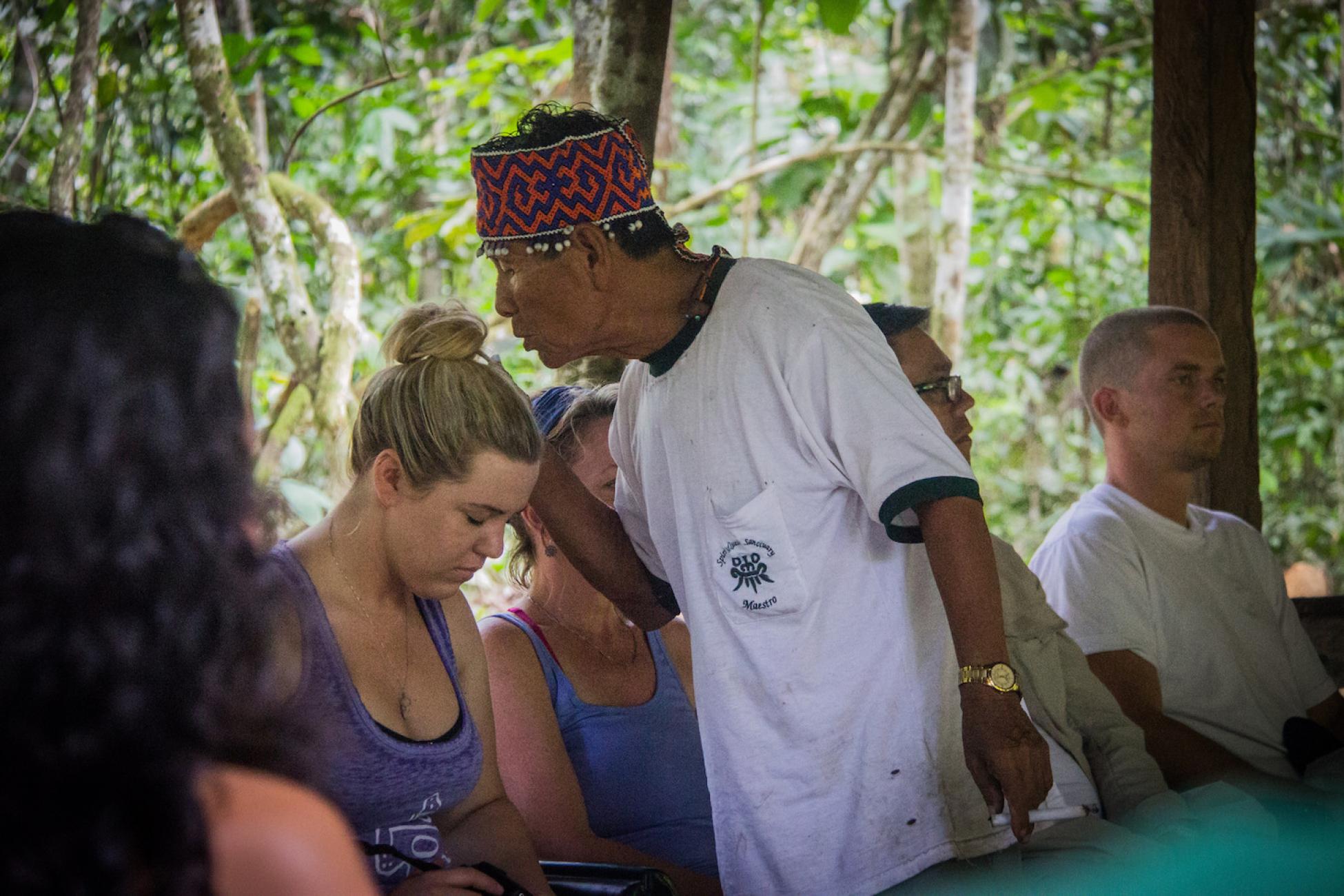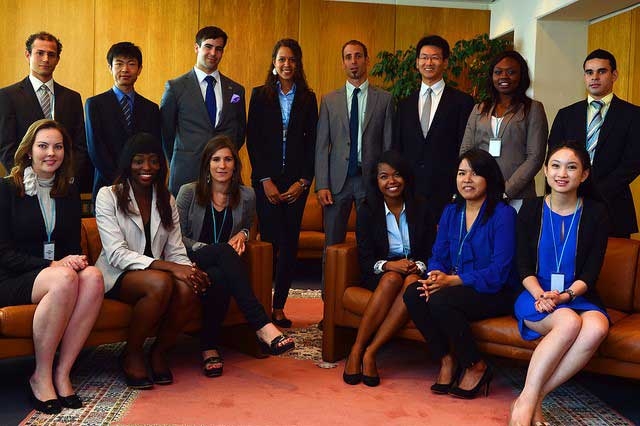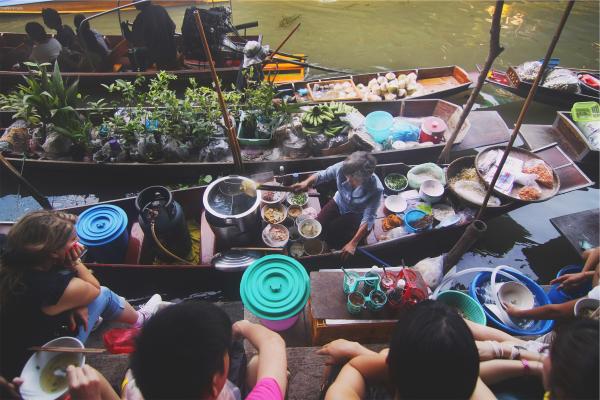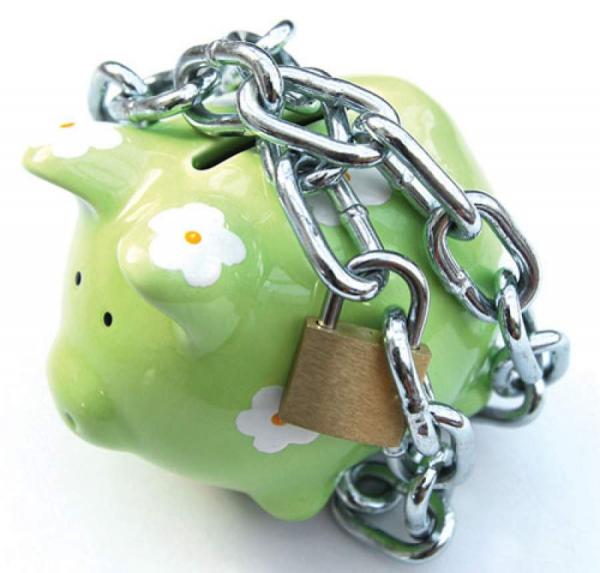When you’re travelling, sometimes you get a feeling like you’re being transported out of your body. Sometimes the experience is so unreal that your mind takes a quick step back to assess the situation from a bird’s eye view. I met a 23-year-old Israeli traveller once who called it “zooming out;” like how you would zoom out on Google maps to see the bigger picture.
That is exactly how I felt when I was preparing to take ayahuasca for the first time. In a thatched wooden house in the Peruvian jungle, I found myself surrounded by the accoutrement of the forthcoming ceremony: thin mattresses and pillows; tobacco for the ayahuasquero; puke buckets for me and the other people about to embark on this journey of the mind. And in a large water bottle, a viscous, brown, ugly-looking liquid: Ayahuasca.
Ayahuasca, also known as yage ("ya-hey") in Colombia, has been used traditionally in Amazonian shamanism for millennia. It's a hallucinogenic brew made from the ayahuasca vine (Bannisteriopsis caapi) and another plant—often Chacruna (Psychotria viridis)—containing N,M dimethyltriptamine (DMT), a hallucinogenic drug that occurs naturally in many plants and animals. DMT is a controlled substance in many countries, including in Canada, the U.S. and the U.K., where it is designated as an illegal psychedelic. The ayahuasca tea used in traditional ceremonies is known for causing vivid visions, which proponents say can alter your worldview and the plant is sometimes referred to as the "vine of the soul" or "the vine of the dead".
In the 1950s, writer William S. Burrows travelled to the Amazon region in search of the mind-altering powers ayahuasca and later wrote The Yage Letters, where he describes the experience to beat poet, Allen Ginsberg. There has been a certain amount of ayahuasca tourism ever since, particularly during the "psychedelic era"of the 1970s. But interest in ayahuasca has grown rapidly over the past two decades, partly the result of a number of widely read books and articles focussing on its use and effects, but also by the broad distribution of information and discussion about it enabled by the Internet.
Iquitos, Peru began marketing itself to Westerners as the ayahuasca capital of the world. Foreign entrepreneurs began investing in Iquitos, opening up ayahuasca centres and retreats in the city and employing local curanderos and curanderas to offer ayahuasca services to foreigners. Today, the explosion of Western interest in ayahuasca means that numerous retreats have popped up throughout the Amazon basin.
But the recent surge in demand among non-native Amazonians for ayahuasca experiences is not without controversy and there are concerns about a number of ayahuasca-related deaths. Some denounce it as cultural appropriation or a scam, marketed to Westerners as a cure-all. Others promote its health and psychological benefits, and others still recognize its importance in the indigenous Amazonian culture. One thing is clear, though: You need to do you research before you sip from the cup.
A brew of mythic proportions
Despite reports to the contrary, ayahuasca might be much less dangerous than you think.
One of the most widely reported deaths occurred in 2015 to New Zealander Matthew Dawson-Clarke. Dawson-Clarke reportedly became very ill after a tobacco tea purging—not ayahuasca—ceremony, and later died of cardiac arrest.
There are other reports of ayahuasca-related deaths as well, though most of the causes are unclear. Brain scans have revealed that it does not have a neurotoxic effect. If you wanted to overdose on ayahuasca in a blaze of ego (and actual) death, you would have to consume 20 times the normal dose.
While ayahuasca itself is not a killer, bad brews or inexperienced ayahuasqueros certainly can be.
Between 2015 and 2017, there were five reported ayahuasca-related deaths. By comparison, 46 people die every day from overdoses involving prescription opioids, according to the Centre for Disease Control.
This is not to say that there aren’t risks. Ayahuasca retreats and the people preparing and administering the brew are not regulated—there are no permits or standard dosages—and only a little research has been done around drug interactions or pre-existing conditions that could put someone at risk. Individuals with a history of psychiatric disorders such as schizophrenia, psychosis, personality disorders, or bipolar disorder, among others, have a higher risk of psychological damage. Likewise, some medications such as anti-depressants, may interact badly with ayahuasca.
And while ayahuasca itself is not necessarily a killer, bad brews or inexperienced ayahuasqueros certainly can be.
Traditionally, ayahuasequeros spend many years training. Preparing to consume ayahuasca themselves as part of their practices means undertaking strict dietas—fasting or shunning sugar, coffee, oil, salt and sexual relations. Today however, many who call themselves shamans have little of that traditional experience and knowledge. The lure of wealth that new ayahuasca retreats offer has resulted in the rise of charlatan ayahuasqueros—those who offer the brew for profit only, mixing in dubious and potentially dangerous ingredients, such as highly toxic toé (Brugmancia). In other cases, men under the guise of healer take advantage of women who come to them for spiritual healing. (In one frightening case, a once-highly respected Colombian shaman, Edgar Orlando Gaitan Camacho, was accused of raping 50 women during ayahuasca ceremonies.)
Drinking from the fountain of wellness
Despite the potential dangers, ayahuasca usage shouldn’t be entirely dismissed. While human clinical research has been limited, largely due to the illegal status of DMT, there are indications that it may have health benefits. According to a 2016 paper published in Frontiers in Pharmacology, human clinical studies have shown that ayahuasca may have benefits for degenerative diseases such as autoimmune diseases and certain cancers.
Most people though, seek out ayahuasca for its psychological effects. Personally, I sought ayahuasca to help me with chronic anxiety and depression. Others I’ve spoken with have told me it helped them recover from alcoholism, reduce anxiety or make an important life decision. (I even met one man who claimed that ayahuasca was instrumental in healing his Lyme disease.)
Beyond anecdotal claims, several studies have found evidence of a beneficial relationship between ayahuasca and mental health. Universidade Estadual de Santa Cruz researcher Paulo Cesar Ribeiro Barbosa his team proposed that ayahuasca “increased assertiveness, joy of life and liveliness.” Meanwhile, a group of researchers at the Federal University of São Paulo found that “adolescents who regularly consume ayahuasca show less signs of anxiety, are more optimistic, self-confident, insistent, and emotionally mature than their peers.” Yet another group of researchers at the Universidade de Brasília concluded that “individuals respond with less anxiety to states that involve hopelessness and resemble panic, while measures of state- or trait-anxiety remain unaffected” after ayahuasca use.
"If we can bring together the best of shamanism and the best of psychotherapy, I think we can offer a new paradigm for healing."
The key, according to some research, is neuroplasticity. Specifically, ayahuasca seems to have the ability to rewire the brain’s reward pathways. It's also said to trigger psychological insights and help people process repressed trauma. This combination of re-wiring the reward pathways and inducing deep psychological insights appears to help people who struggle with addiction.
"If we can bring together the best of shamanism and the best of psychotherapy, I think we can offer a new paradigm for healing," says Dennis McKenna. An ethno-botanist and ethno-pharmacologist who has studied the clinical effects of ayahuasca, McKenna likens the drug to intense therapy and intends to open an ayahuasca medical clinic in Peru. "What we're really trying to do here is revolutionize psychiatry," he says.
Changing traditions? Or challenging traditions?
One argument for ayahuasca tourism has been that it helps bring money into communities. Author of Ayahuasca, Iquitos and Monster Vorax, Carlos Suárez Álvarez points out that 10 of the 40 biggest ayahuasca retreats in Iquitos, Peru pull in nearly $8.7 million CAD annually by hosting foreigners.
But Álvarez also calls into question the ethics of this influx of money. He argues that the industry is changing the fabric of the community’s social structures and traditional culture, by introducing hierarchies of power and wealth that didn’t previously exist. Ayahuasqueros traditionally charged only enough to sustain themselves. Foreigners staying at a ayahuasca retreat can now pay more than $1,200 per stay. Where traditionally ayahuasqueros would accept only the things that were required to sustain them, the tradition is changing.
It’s also changed the way ayahuasca is used. Practitioners are altering ceremonies to meet the expectations of tourists. Westerners think visions are the bread and butter of the experience, but the indigenous may see if otherwise.
“From the point of view of the indigenous people, ayahuasca is medicine. It’s something that will heal your body and your mind,” says anthropologist Luis Eduardo Luna, who specializes in the study of ayahuasca.
Many ayahuasqueros will tell you that they are in the service of the plants, which are viewed as sentient beings and, although an ayahuasquero should be knowledgeable and intuitive, it is the plant itself that you should expect guidance from.
And this has another potential adverse effect. Because ayahuasqueros catering to Westerners focus mainly on the visions aspect, other more essential practices are being ignored and forgotten. Healers today may only learn how to encourage visions, rather than learning the whole of Amazonian medicinal tradition, such as how to cure diseases.
However, ayahuasca use may also be responsible for a renewed interest in traditional medicine and healing—and even a heightened sense of worth—particularly among young indigenous people.
For example, The Temple of the Way of Light (a shamanic healing centre) and the Chaikuni Insitute (a human rights organization) have encouraged indigenous university students to participate in their ayahuasca ceremonies. The hope is that these students will be reintroduced to stigmatized traditions and that they will change their perception of this ancient healing practice.
“Dialogue with [foreign travellers] has greatly motivated us,” one young indigenous Ecuadorian told interviewers from the Ethnobotanical Stewardship Council (ESC). “It makes us feel how important our science is.”
But the idea that indigenous peoples must find worth in their traditions through the approving eyes of Westerners is a pillar of colonialism. At the Temple of the Way of Light, indigenous curanderos are employed, but ceremonies are geared toward their Western visitors. What the indigenous youth are introduced to is not necessarily a reawakening of their ancestral heritage, but a whitewashed version of it.
“My main concern is that our people and our culture will be forgotten as the white man gets carried away with being an ‘authority’ on ayahuasca."
“My main concern is that our people and our culture will be forgotten as the white man gets carried away with being an ‘authority’ on ayahuasca,” says indigenous healer Leopardo Yawa Bane.
It's a sentiment shared by Unión de Médicos Indígenas Yageceros de la Amazonia (UMIYAC), whose mission is to defend the cultural patrimony and autonomy of indigenous peoples in Colombia. While the country has yet to see the same kind of boom in ayahuasca tourism experienced in Peru, Riccardo Vitale, an advisor for UMIYAC says that watching what is happening in Iquitos is worrying—particularly when many of the retreats are foreign-owned.
“What we see in Peru is not ideal for indigenous autonomy and self-determination. Becoming an employee in a Euro-American venture is hardly about strengthening [indigenous] organizations, communities or collectives,” says Vitale.
The members of UMIYAC use ayahuasca for personal and collective growth. Describing the members as thinkers and spiritual authorities, Vitale says that ayahuasca helps indigenous communities connect with the spiritual world and Mother Nature, strengthening their autonomy and self-determination. In the face of that kind of significance, questions of personal problems with anxiety and depression measure-up short in comparison.
“We cannot turn spiritual knowledge, which is the core of our resistance, into a commodity,” says Vitale.
The commodification of spirituality
Often, foreigners looking for an ayahuasca experience will end up at a retreat with cozy rooms, hot water, comfy beds, and westernized food (although it probably will be lacking in sugar, oil, salt, coffee and alcohol).
I chose a retreat in the jungle near Pucallpa, which I found via Workaway. There was no hot water, no plumbing and the beds were thin mattresses on the floor. But even with the lack of amenities, one could not truly consider this an authentic experience. After all, the centre also had an Internet café.
More to the point, the ceremony itself was not necessarily an authentic one. Álvarez claims that during his studies of ayahuasca ceremonies in the Peruvian Amazon, he never once saw a patient drink the ayahuasca brew. Instead, it is the healer who takes the brew to enter the spirit world and to discover the ailment of the patient. But change is inevitable. As the world changes and the needs of the people in it change, so must the medicine.
“The world of ayahuasca is a fusion of many needs, expectations, relations, ecologies and economies,” says Vitale.
According to anthropologist Evgenia Fotiou, today’s ayahuasca tourists—or “pilgrims,” as she calls them—are mostly white male professionals with higher education under their belts, looking for alternative cures to ailments that they are not able to find through Western medicine. Their motivation stems from a feeling that their world cuts them off from something vital, and they’re looking for a way to reconnect. For this, they turn to indigenous shamanism.
Regardless of why you seek it out, any ayahuasca anthropologist will tell you that an ayahuasca journey is not something you should enter into lightly.
“When in doubt, forbear. Drinking shamanic plant brews is like an extreme sport, akin to sailing on high seas or mountain climbing. Things can go badly wrong. To embark lightly is to invite major problems,” says anthropologist and author Jeremy Narby.
That’s why the Ethnobotanical Stewardship Council, which aims to regulate the ayahuasca tourism industry, is currently developing best practice guidelines (known as the Ayahuasca Agreement) to ensure the safety of participants. There may even come a day when travellers seeking an ayahuasca ceremony can simply search the ESC directory for centres or communities that adhere to these standards.
Ayahuasca tourism is certainly a delicate balancing act. Without even mentioning the concerns over safety and the reported benefits, those of us who wish to participate in ayahuasca ceremonies have many more questions to ask. If we participate, are we only serving to increase cultural appropriation and the potential destruction of indigenous culture? Or do we take the line that change is inevitable and that—if done with respect and understanding—Westerners can help to reinvigorate indigenous practices and learn to value other cultures?
It’s difficult to answer these questions. But throughout my conversations with experts—and through my own experience—I do know one thing: Ayahuasca is not a miracle drug. What it does is provide a deeper understanding of the problems you face, and through this understanding, you can take steps to heal the ailment.
In truth, the work of ayahuasca at its best is to make you feel small in comparison to the vastness of the universe. Ayahuasca may make you eat humble pie, but before you take the first bite, you have the obligation to ask yourself what your role is. Have you come to trip out, or are you participating in an ancient, powerful ceremony? Have you come to take, or have you come to exchange ideas?
Perhaps ayahuasca’s greatest power is to open eyes to the indigenous life and science. Ayahuasca gives the indigenous a platform to showcase their way of life, and it gives us the opportunity to value another culture without appropriating it—if we’re open to it.
This article was originally published in Verge's March 2019 digital edition.
Add this article to your reading list





